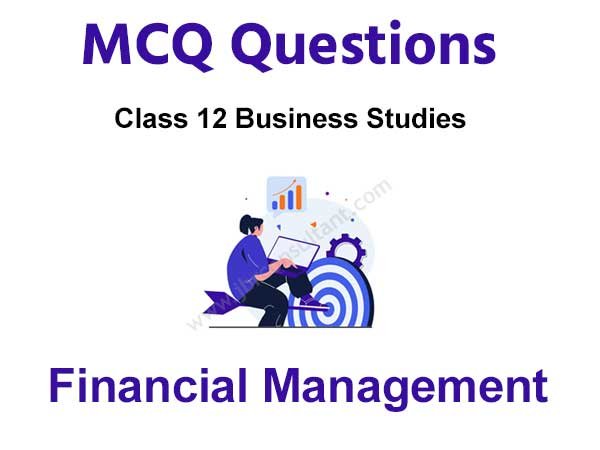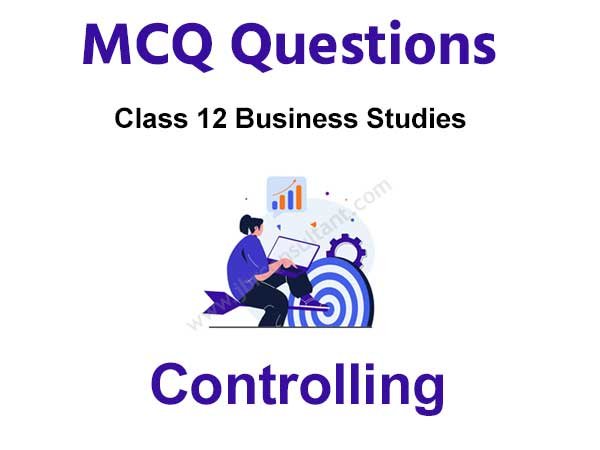Population Distribution Density Growth and Composition Class 12 MCQ is one of the best strategies to prepare for the CBSE Class 12 Board exam. If you want to complete a grasp concept or work on one’s score, there is no method except constant practice. Students can improve their speed and accuracy by doing more MCQ on Population Distribution Density Growth and Composition Class 12, which will help them all through their board test.
Population Distribution Density Growth and Composition Class 12 MCQ Questions with Answer
Class 12 Geography MCQ with answers are given here to chapter 1 Population Distribution Density Growth and Composition. These MCQs are based on the latest CBSE board syllabus and relate to the latest Class 12 Geography syllabus. By Solving these Class 12 MCQs, you will be able to analyze all of the concepts quickly in the chapter and get ready for the Class 12 Annual exam.
Learn Population Distribution Density Growth and Composition Class 12 MCQ with answers pdf free download according to the latest CBSE and NCERT syllabus. Students should prepare for the examination by solving CBSE Class 12 Population Distribution Density Growth and Composition MCQ with answers given below.
Question 1. How many scheduled languages in our constitution?
a. 20
b. 21
c. 22
d. 23
Answer
C
Question 2. Which state has the highest sex ratio?
a. Kerala
b. Himachal Pradesh
c. Odisha
d. Tamil Nadu
Answer
A
Question 3. What is the present annual growth rate of India?
a. 1.56%
b. 1.76%
c. 2.03%
d. 2.13%
Answer
B
Question 4. The average density of population of IndIa (2011) is per km.
a. 216
b. 382
c. 221
d. 324
Answer
B
Question 5. How much percent of World’s population is in India?
a. 10.7%
b. 12.7%
c. 16.7%
d. 18.7%
Answer
C
Question 6. First census of India was held in which year?
a. 1872
b. 1881
c. 1885
d. 1891
Answer
A
Question 7. A worker is known as main worker, who works atleast:-
a. More than 183 days
b. 185 days
c. Less than 183 days
d. 200 days
Answer
A
Question 8. In how many years India’s population will be doubled?
a. 32 years
b. 34 years
c. 36 years
d. 38 years
Answer
D
Question 9. Which state has the highest % of rural population?
a. U.P.
b. Himachal Pradesh
c. Bihar
d. Sikkim
Answer
B
Question 10. How many Million Plus towns are there in India (in 2001)?
a. 25
b. 27
c. 30
d. 54
Answer
D
Question 11. Which state has lowest literacy rate?
a. Bihar
b. Odhisha
c. Rajasthan
d. Jharkhand
Answer
A
Question 12. How many stages/phases of population growth?
a. One
b. Two
c. Three
d. Four
Answer
D
Question 13. Which one of the following is the largest group of India?
a. Sino-Tibetan
b. Austric
c. Indo-Aryan
d. Dravidian
Answer
C
Question 14. Which state in India had the highest population as per the 2011 census?
a. Uttar Pradesh
b. Punjab
c. West Bengal
d. Himachal Pradesh
Answer
A
Question 15. Which of these language families is predominant in India?
a. Sino-Tibetian
b. Dravidian
c. Austric
d. Indo-European
Answer
D
Question 16. Which state has lowest sex ratio?
a. Punjab
b. Haryana
c. Jharkhand
d. Bihar
Answer
B
Question 17. What was the population of India as per 2011 Census?
a. 1028 million
b. 3287 million
c. 3182 million
d. 1210 million
Answer
D
Question 18. Which state of India is highest population density?
a. Bihar
b. Assam
c. Mizoram
d. Tamil nadu
Answer
A
Question 19. According to 2011 Census, which one of the following states has the highest population density?
a. Goa
b. Kerala
c. Maharashtra
d. Tamil Nadu
Answer
A
Question 20. Where does India rank as a world population?
a. First
b. Second
c. Fifth
d. Seventh
Answer
B
Question 21. Which state of India has highest population?
a. U.P.
b. Bihar
c. Punjab
d. Kerala
Answer
A
Question 22. In how many years India’s population will be doubled?
a. 32 years
b. 34 years
c. 36 years
d. 38 years
Answer
C
Question 23. The number of farmers per unit area of farmland is known as:
a. Agricultural density of a population
b. Working density of a population
c. Industrial density of a population
d. Rural density of a population
Answer
A
Question 24. Where does India rank in the world as regards area?
a. Fifth
b. Sixth
c. Seventh
d. Eighth
Answer
C
Question 25. Which of the following is the largest religious minority in India?
a. Christian
b. Sikh
c. Buddhist
d. Muslim
Answer
D
Whoever needs to take the CBSE Class 12 Board Exam should look at this MCQ. To the Students who will show up in CBSE Class 12 Geography Board Exams, It is suggested to practice more and more questions. Aside from the sample paper you more likely had solved. These Population Distribution Density Growth and Composition Class 12 MCQ are ready by the subject specialists themselves.
Question 26. The literacy rate in India is:
a. 55%
b. 60%
c. 74%
d. 67%
Answer
C
Question 27. What is the average sex ratio In India (2011)?
a. 910
b. 923
c. 940
d. 953
Answer
C
Question 28. What is life expectancy in India?
a. 55 years
b. 60 years
c. 66 years
d. 70 years
Answer
C
Question 29. The first complete population Census was conducted in Indiain:
a. 1882
b. 1881
c. 1883
d. 1884
Answer
B
Question 30. The state with the highest population in India is:
a. West Bengal
b. Kerala
c. Uttar Pradesh
d. Kerala
Answer
C
Question 31. Arrange the following phases in a sequence order according to their occurrence in Indian population:
(i) Populationexplosion
(ii) Stationaryphase
(iii) Decreasedgrowth
(iv) steady growth
a. i,iv,ii,iii
b. iv,i, iii, ii
c. ii,iv,i,iii
d. iii,ii,iv,i
Answer
C
Question 32. The natural growth rate is analyses by assessing the:
a. Crude birth and death rate
b. Positive birth and death rate
c. Negative birth and death rate
d. All of the Above
Answer
A
Question 33. Name the state of India having the lowest share of population as per 2011 Census.
a. Goa
b. Arunachal Pradesh
c. Sikkim
d. Tripura
Answer
C
Question 34. The state of India which has the lowest percentage of population below poverty line:
a. Punjab
b. TamilNadu
c. Jammu&Kashmir
d. Goa
Answer
C
Question 35. Name the state of India having lowest density of population as per2011Census.
a. Punjab
b. Haryana
c. Tamil Nadu
d. Arunachal Pradesh
Answer
D
Question 36. The period from1901to1921is referred to as period of:
a. Stagnant or stationery phase of growth of India’s population.
b. Steady population growth.
c. Population explosion in India.
d. None of the Above
Answer
A
Question 37. The period of steady population growth was of:
a. 1921-1951
b. 1911-1921
d. 1931-1941
c. 1901-1911
Answer
A
Question 38 . is the term which means the spread of people a cross the world.
a. Population disturbance
b. Population distribution
c. Population counting
d. None of the above
Answer
B
Question 39. What was the annual growth rate of population in India as per 2011 census?
a. 1.16%
b. 1.64%
c. 2%
d. 2.5%
Answer
B
Question 40. ArrangethestatesofIndiawithhighesttolowestpopulationdensity.
(i) West Bengal (II)Bihar
(iii) UttarPradesh (IV)MaharashtraOptions:
a. i,ii,iii,iv
b. ii,i,iii,iv
c. iv,iii,ii,i
d. ii,iv,i,iii
Answer
B
Question 41. of population is the change in the number of people living in a particular area between two points of time.
a. Growth
b. Decline
c. Stability
d. Access
Answer
A
Question 42. The density of population is the number of people per unit area of arable land.
a. physiological
b. psychological
c. physical
d. phishing
Answer
A
Question 43. In the post 1981 till present ,the growth rate of country’s population remained .
a. Stagnant
b. High
c. Low
d. Constant
Answer
B
Question 44. The literacy rate in India is:
a. 55%
b. 60%
c. 74%
d. 67%
Answer
C
Question 45. A continuous belt of states from west to east in the north-west, north, and north central parts of the country has relatively growth rate than the southern states.
a. high
b. low
c. slow
d. fast
Answer
A
Question 46. Where does India rank as a world population?
a. First
b. Second
c. Fifth
d. Seventh
Answer
B
Question 47. What was the average densfty of population of India In 2011?
a. 235 persons per sq km
b. 382 persons per sq km
c. 432 persons per sq km
d. 657 persons per sq km
Answer
B
Question 48. The growth of population rate per decade is.
a. 15.3%
b. 17.3%
c. 17.6%
d. 21.3%
Answer
C
Question 49. Which phase is referred to population explosion in India?
a. Phase I
b. Phase II
c. Phase III
d. Phase IV
Answer
C

You can easily get good marks If you study with the help of Class 12 Population Distribution Density Growth and Composition MCQ. We trust that information provided is useful for you. NCERT MCQ Questions for Class 12 Geography PDF Free Download would without a doubt create positive results.
We hope the information shared above in regards to MCQ on Population Distribution Density Growth and Composition Class 12 with Answers has been helpful to you. if you have any questions regarding CBSE Class 12 Geography MCQ Pdf, write a comment below and we will get back to you as soon as possible.
Frequently Asked Question (FAQs)
How many MCQ questions are there in Class 12 Geography Chapter 1?
In Class 12 Chapter 1 Geography, we have provided 49 Important MCQ Questions, But in the future, we will add more MCQs so that you can get good marks in the Class 12 exam.
Can we score good marks in Class 12 Geography with the help of Population Distribution Density Growth and Composition MCQ Questions?
Yes, MCQ Question is one of the best strategies to make your preparation better for the CBSE Board Exam. It also helps to know the student’s basic understanding of each chapter. So, You can score good marks in the Class 12 Geography exam.


